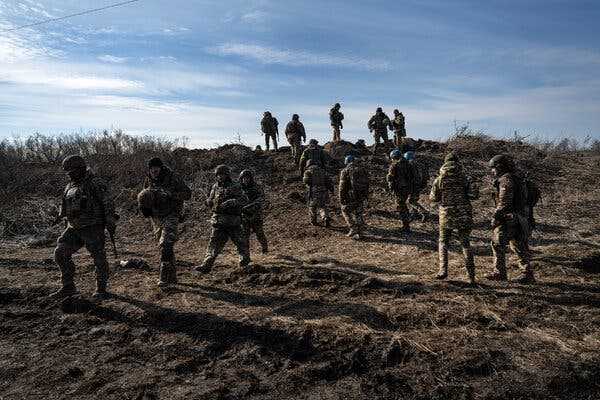William J. Burns, the C.I.A. director, and Avril D. Haines, the director of national intelligence, described an increasingly dire situation.
- Share full article

Ukrainian soldiers at a training in eastern Ukraine last month after fighting to hold Avdiivka, which eventually fell to Russia.
Senior intelligence officials warned on Monday that without additional American aid, Ukraine faced the prospect of continued battlefield losses as Russia relies on a network of critical arms suppliers and drastically increases its supply of technology from China.
In public testimony during the annual survey of worldwide threats facing the United States, the officials predicted that any continued delay of U.S. aid to Ukraine would lead to additional territorial gains by Russia over the next year, the consequences of which would be felt not only in Europe but also in the Pacific.
“If we’re seen to be walking away from support for Ukraine, not only is that going to feed doubts amongst our allies and partners in the Indo-Pacific; it’s going to stoke the ambitions of the Chinese leadership in contingencies ranging from Taiwan to the South China Sea,” William J. Burns, the C.I.A. director, told Congress.
The assessment marked a sharp turn from just a year ago, when Ukraine’s military appeared on the march and the Russians seemed to be in retreat.
Over the course of just over two hours of testimony before the Senate Intelligence Committee, Mr. Burns and the director of national intelligence, Avril D. Haines, described an increasingly dire situation for Ukraine, one in which Russia is producing far more artillery shells and has worked out a steady supply of drones, shells and other military goods from two key suppliers.
“It is hard to imagine how Ukraine will be able to maintain the extremely hard-fought advances it has made against the Russians, especially given the sustained surge in Russian ammunition production and purchases from North Korea and Iran,” Ms. Haines said.
We are having trouble retrieving the article content.
Please enable JavaScript in your browser settings.
Thank you for your patience while we verify access. If you are in Reader mode please exit and log into your Times account, or subscribe for all of The Times.
Thank you for your patience while we verify access.
Already a subscriber? Log in.
Want all of The Times? Subscribe.
SKIP ADVERTISEMENT
Source: nytimes.com



